English
About Shodoshima
Shodoshima is literally translated as, ‘small bean island’. This island is located in the Seto Inland Sea between Okayama Prefecture and Takamatsu Prefecture. It is the second largest island, next to Awaji Island, in the Seto Inland Sea. The distance around the whole island is about 126km.
There are two towns on the island-Tonosho and Shodoshima. About 30,000 people live on this island. Shodoshima is composed of two islands in close proximity -the main island and a smaller island called Maejima. Shodoshima is known for is production of soy sauce and olives as well as tsukudani and somen noodles. An interesting fact about Shodoshima is that it was the stage for the movie "Twenty-Four Eyes," which was based on the novel written by Shodoshima native, Sakae Tsuboi. Also, in Tonosho town, Dofuchi Strait divides the Main Island and Maejima Island. The Guinness Book of World Records has certified this strait, in 1996, as the narrowest strait in the world.
The climate of this island is much like that of the Mediterranean Sea. It has warm weather and little precipitation. It is very rare to have snow in the winter. Because of the pleasant climate and beautiful nature, many plants and wild life grow in abundance. Thus, the island is often referred to as, “The Natural Museum”.
This magnificent island is peaceful and its people are friendly, making for an easy escape from hectic urban life.
Good places to see on Shodoshima
The Statue of ‘People in Peace’ 平和の群像
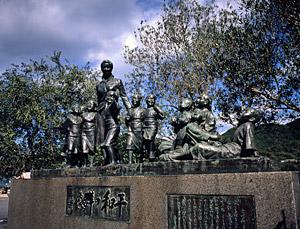
The statue of ‘People in Peace’ is located at Tonosho Port. This bronze statue is from the novel "Twenty-Four Eyes" written by Sakae Tsuboi, a popular author who was born in Shodoshima. With the wish for peace and happiness, these pupils greet travelers to Shodoshima.
Dofuchi Strait 土渕海峡
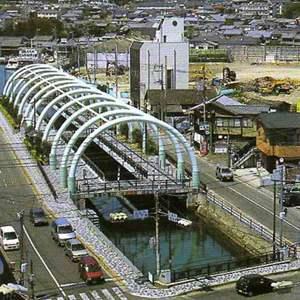
The Guinness Book of World Records has recorded, in 1996, Dofuchi Strait as the narrowest strait in the world. This strait, which runs between Main and Maejima Islands, is 2.5km long and 9.93m wide.
Because the strait is so narrow, it looks like a river. There are three bridges over the strait. At the Tonosho Town Hall, you can receive a certificate for crossing over this strait. (It costs 100yen.)
Meiro no Machi 迷路のまち
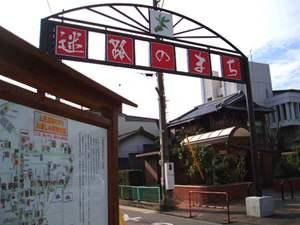
This town was first built around 680 years ago with an intentionally complicated design in order to protect residents from pirates and the buildings from strong ocean winds.
Our town’s complicated alleys look like a maze. Therefore, people have started to call it “Meiro no Machi” (town in a maze).
“Meiro no Machi” is located in the middle of Tonosho.
There are houses which were made in the Taisho and Showa Period. The narrow streets are only about 1.5 meters wide. This is a good place for taking a walk because there is an old-fashioned atmosphere in this area.
Angel Road エンジェルロード
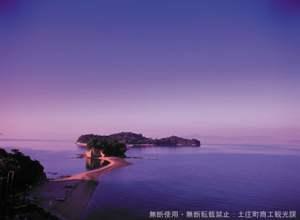
There are four small islands off of Ginpaura in Tonosho. During ebb tide; these four small islands are connected by a sand road. This natural mysterious phenomenon appears twice a day. This is a famous romantic spot. If you cross the sandbar while holding the hand of someone who is precious to you, your dream will come true, and you can live happily together forever. Many young people visit here every year.
Hoshoin Temple and Juniper Tree 宝生院のシンパク
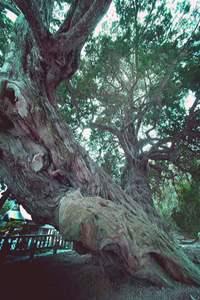
Hoshoin Temple, the 54th temple of the Shodoshima Eighty-eight Pilgrimage Sites, is situated on the west slope of Oto Mountain.
There is a juniper tree there, which is the biggest in Japan. It is designated a national monument. According to a legend, this juniper tree was planted by Emperor Oojin. It is more than 1500 years old.
Osaka Castle Zanseki Memorial Park 大坂城残石記念公園
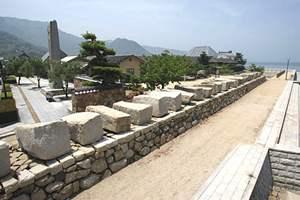
400 years ago, Shodoshima granite rocks were transported to Osaka by sea for building Osaka Castle.
Here is the port from where those rocks were sent. Some of the granite rocks quarried here remains on the island. On display, there is some of the equipment used for quarrying the rocks and for shipping them to Osaka. Here is also the Michi no Eki (road station) where visitors can get souvenirs and information.
Choshi Gorge and Choshi Waterfall 銚子溪・銚子の滝
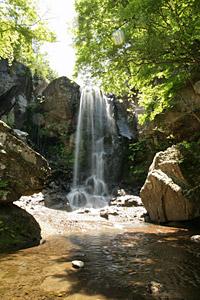
In Choshi Gorge, there is a monkey park. There are about 500 monkeys. It is an open air zoo. You are even allowed to feed them. Spring is the birth time of monkey babies. You will see a cute scene of baby monkeys being held by their mothers. These monkeys are designated as a natural monument. The monkeys in the area around here are all living in the wild, so if you are lucky, you will see monkeys on the way to Choshi Gorge. This place is good for a family.
Near the monkey park, there is the Choshi Waterfall, which is only about 20m high but it is the highest waterfall in Shodoshima. It is recommended to visit the waterfall the day after a heavy rain.
Utsukushi-no-hara Plateau 美しの原高原
Utukushi-no-hara Plateau is the only plateau on Shodoshima. This plateau is 777 m above sea level and natural plants bloom all over. There is the Shihozashi View Point on this plateau. The view point’s name, Shihozashi, means “viewing all four directions.” Visitors can see a beautiful, large-scale panorama of mountains, ocean, and the sky. It was selected as one of the One Hundred Views of Sanuki. It is about five minutes by car from Kanka Gorge to this plateau.
Kanka Gorge 寒霞渓
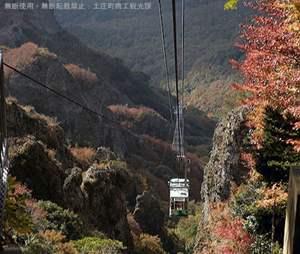
Kanka Gorge is a symbol of the Seto Inland Sea National Park. This gorge is one of the three most beautiful and magnificent gorges in Japan. The unique, natural shape of the gorge is the result of rain and wind. There are so many beautiful wild plants and flowers, some of which can only be found in this place in the whole of Japan.
Kanka Gorge is especially famous for its beauty and fine autumn leaves.
Visitors can enjoy looking down on the gorge from the ropeway that runs to the top of a mountain from Koun-tei.
Hoshigajyo Mountain 星ヶ城
Hoshigajyo Mountain, 816.6m above sea level, is the highest mountain on Shodoshima.
In the Nanbokucyo Period, Nobutane Sasaki built a castle on Hoshigajyo Mountain. There are still ruins of this castle. From the mountain, you can see the Seto Ohashi Bridge, the Naruto Ohashi Bridge, and the Akashi Kaikyo Ohashi Bridge, all at the same time. The circumference of the mountain is about 1.5km and takes about an hour and a half on foot.
Senmaida 千枚田
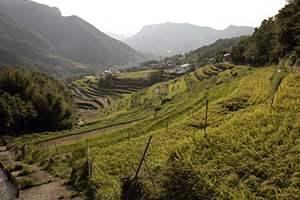
Senmaida is located in Nakayama, where the locals call it Satoyama. (Satoyama is a small town with an old-time atmosphere) Senmaida is on the side of the mountain, with the height increasing from 150m to 250m. These terraced rice paddies were built about 700 years ago by piling up small rocks like stairs. There are about 800 rice paddies of different sizes in Senmaida. Rice cannot grow without adequate water. But this area has abundant spring water, so people never have to worry about it. Planting rice begins at the end of April to the beginning of May. Harvesting rice begins in September and continues until October.
Shishigaki しし垣
Shishigaki is a type of wall built to protect farm products from wild boars. It was made from soil, mud and stones in the 1790’s, the middle of the Edo Period.
The Shishigaki even has doors so that people can move from one side of the wall to the other. With its length of 120km, the wall is like a miniature version of the Great Wall of China. The view from Shishigaki is amazingly beautiful. You can see a panorama of the Seto Inland Sea.
Shodoshima Furusato Mura 小豆島ふるさと村
At Shodoshima Furusato Mura, you can experience many activities: sea kayaking, cycling, fishing, tennis, camping, picking plums, barbecuing and even making somen noodles. Here, you can buy some of Shodoshima famous products, such as olive products, shoyu (soy sauce), and tsukudani (food preserved in soy sauce). There are also accommodations, galleries, and a cafe, (where you can try Shodoshima famous food, somen noodles).
Olive Garden and Olive Park オリーブ園・オリーブ公園
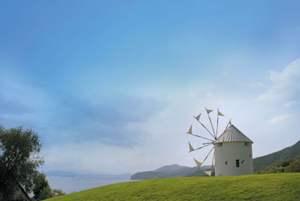
One of the most famous products on Shodoshima is its olives. The first olive trees in Japan were cultivated in the Olive Garden. So many olive trees are planted there. You can enjoy walking on the paths through the olive trees as you look down on the sea.
In Olive Park, you can see some Greek landmarks because Milos Island in Greece is a sister island with Shodoshima. In this park there are herb gardens; over 130 herbs are grown throughout the year. You can make crafts using those herbs and plants, grown in the Olive Park, and you can drink herb tea. Enjoy a pleasant walk among the wonderful scents of the olive trees and the beauty of the Mediterranean-like Seto Inland Sea.
Hishio no Sato 醤の郷
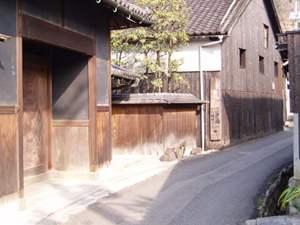
Hishio no Sato is famous for its soy sauce and tsukudani. Hishio is the word for foods and seasonings which are fermented with salt and malted rice. In Shodoshima, the manufacture of salt started in the Edo Period, even before soy sauce brewing. After the Second World War, people started making tsukudani from soy sauce. (Tsukudani is made from small fish, seaweed and vegetables boiled in soy sauce) Now soy sauce and tsukudani are among the most famous products of Shodoshima.
Marukin Shoyu Historical Museum マルキン醤油記念館
At the Marukin Soy Sauce (Shoyu) Historical Museum, you can learn about how to make soy sauce and about the Marukin Soy Sauce Company. This museum was made in a remodeled soy sauce factory, which had been used during the Taisho Period. This building is also registered as a Tangible Cultural Property. There is a lot of soy sauce equipment and a remarkably huge old soy vat. Upon entry, you will receive a complimentary bottle of soy sauce as a souvenir.
Misaki no Bunkyojyo 岬の分教場
Misaki no Bunkyojyo is the elementary school in which the movie, “Twenty-Four Eyes,” was set. The school building was built in 1902 and was in use until 1972. There are two classrooms and a small dormitory for teachers in this school. Pictures on the walls of the classroom were drawn by actual students of this elementary school.
Twenty-Four Eyes Eiga Mura 二十四の瞳映画村
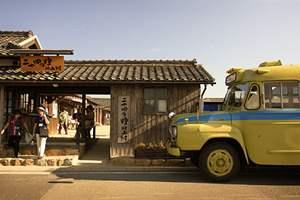
The movie, “Twenty-Four Eyes” is set on Shodoshima. This is the open set where the movie was filmed. It makes you feel as though you are back in the early Showa Period. You can even watch the film, “Twenty-Four Eyes”, at Shochikuza Eiga Kan in this movie village.
Noson Kabuki 農村歌舞伎
Noson (rural) Kabuki performances started on Shodoshima about 300 years ago. They were popular during the Edo, Muromachi, and Taisho Periods.
There were 30 stages where Noson Kabuki was performed until the Showa Period. Now there are just two: Hitoyama Noson Kabuki and Nakayama Noson Kabuki.
There is a story about the origin of Noson Kabuki. About 300 years ago a small village was suffering from a lack of water. The chief of the village decided to construct a reservoir to save the village. Thanks to his hard work, people in the village never had to worry about water shortages again. They celebrated, and that is how Noson Kabuki performances started. Noson Kabuki is a folk art that is famous all over Japan.
These days, Noson Kabuki is performed by people in Hitoyama and Nakayama, twice a year. The Hitoyama Noson Kabuki performance is on the first of May and the Nakayama Noson Kabuki performance is in the middle of October.
Shodoshima Eighty-Eight Pilgrimage Sites 小豆島八十八ヵ所霊場
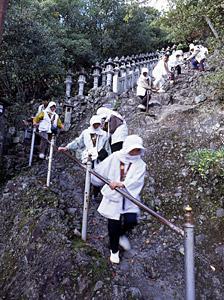
The Eighty-Eight Temple Circuit is famous on Shikoku. However, Shodoshima also has its own set of Eighty-eight Pilgrimage Sites. The total distance of the Eighty-eight Pilgrimage Sites circuit on Shodoshima, 150 km, is one tenth of that of the larger Shikoku circuit. It takes 2 to 3 days by car, 7 to 8 days on foot, to visit the Eighty-eight Pilgrimage Sites on Shodoshima.
Some temples are located on the top of mountains or on a cliff. The temple located in the highest place on Shodoshima is about 570m above sea level. These Eighty-eight Pilgrimage Sites are surrounded by beautiful nature. You will feel refreshed visiting them.
Special Products of Shodoshima
Sesame Oil ごま油
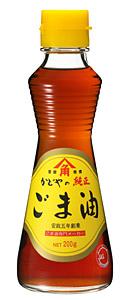
Shodoshima started to make sesame oil in 1858. It is Japan’s biggest producer of sesame oil. Now, 50% of sesame oil in Japan is made on Shodoshima. Sesame oil does not contain cholesterol and therefore is very good for your health. Sesame oil is used, instead of rapeseed oil, when making somen noodles. You will smell the nutty scent of sesame oil when you arrive at Tonosho Port.
Shodoshima Somen Noodles 素麺
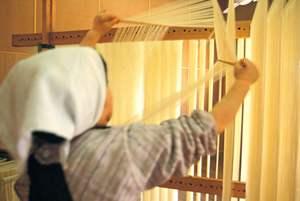
Shodoshima somen noodles have been made since the beginning of the Edo Period. Shodoshima is known as one of the four somen production areas in Japan. Among all of the noodles in Japan, somen have the longest history.
The main characteristic of Shodoshima somen is the use of sesame oil which is made on Shodoshima. Sesame oil maintains the freshness, quality, and taste of the somen. Shodoshima is famous for the poetic charm associated with noodle makers drying their thin somen in the sun from October to March. It is a scene of curtains of somen blowing in the wind. Currently, there are about 200 producers of somen. The climate and sea breeze of Shodoshima make Shodoshima somen very tasty.
Plums スモモ
People started to cultivate plums on Shodoshima from the beginning of the Showa Period. These Redstar plums are soft, slightly sour and sweet, a good combination. Not only eaten as fresh fruit, they are also recommended for juice, jam, ice cream, sherbet and wine. The plum’s white flowers bloom in March. Harvest time is from the end of June to the beginning of July.
Tsukudani 佃煮
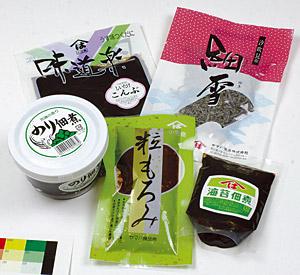
Tsukudani is one of the traditional foods of Japan. Tsukudani is made by stewing ingredients in a sugar and soy sauce broth. Soy sauce brewing is a traditional industry on Shodoshima. Located on the sea, Shodoshima also has other sea products, such as sea weed and small fish. These ingredients from Shodoshima are necessary for making good tsukudani. One of the reasons that tsukudani was developed is that tsukudani preserves the food ingredients used so that they don’t go bad, even in the hot, damp summer weather in Japan. Also, it is easy to carry to far places. These days, various ingredients are used for tsukudani.
Soy Sauce 醤油
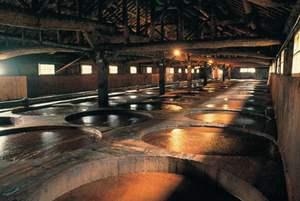
Soy sauce brewing started about 400 years ago on Shodoshima. During the first half of the Edo Period, the quantity of soy sauce production was low. The price was almost the same as for Japanese sake and three or four times higher than rice.
By the middle of the Edo Period, soy sauce was a commodity that had spread to the common people. Soy sauce brewing permeated throughout Shodoshima for the following reasons: Shodoshima was a good place for salt production. Also, it was easy to transport the ingredients and products from Shodoshima to other places. Shodoshima has good weather for soy sauce brewery. Soy sauce is necessary for Japanese food.
It takes about one year to make soy sauce. The taste of soy sauce is both subtle and deep. Unrefined soy sauce, the mash before pressing, is called moromi. Moromi is good as a dipping sauce for vegetables (especially cucumber).
Olive Products オリーブ製品
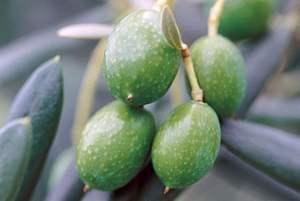
Olives were brought to Shodoshima for the first time in 1908. At that time, the Department of Agriculture tried to plant imported olive trees from the US in three places in Japan: Mie Prefecture, Kagoshima Prefecture and Kagawa Prefecture. Only olive trees planted on Shodoshima, Kagawa Prefecture succeeded to grow well. About three years after the first olive trees were planted, about seven kilos of olives were harvested. Olive flowers start to bloom from the end of May to the first of June. The harvesting of green olives for preserving in salt is from the end of September to the middle of November. Mature black and purple olives for olive oil are harvested from the first of November to the end of December.
Although many vegetable oils are made by pressing the seed, olive oils are made by pressing the fruit. For this reason, olive oil has rich nutrients. Not only olive oil but olives are used for several products such as, many kinds of foods, cosmetics and crafts using the olive trees. There are currently 30000 olive trees planted on Shodoshima.
この記事に関するお問い合わせ先
商工観光課
〒761-4192
香川県小豆郡土庄町淵崎甲1400番地2
電話番号:0879-62-7004 ファックス:0879-64-6105
メールフォームによるお問い合わせ

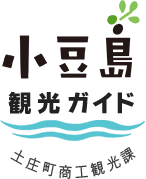


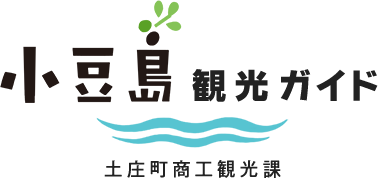


更新日:2020年03月02日